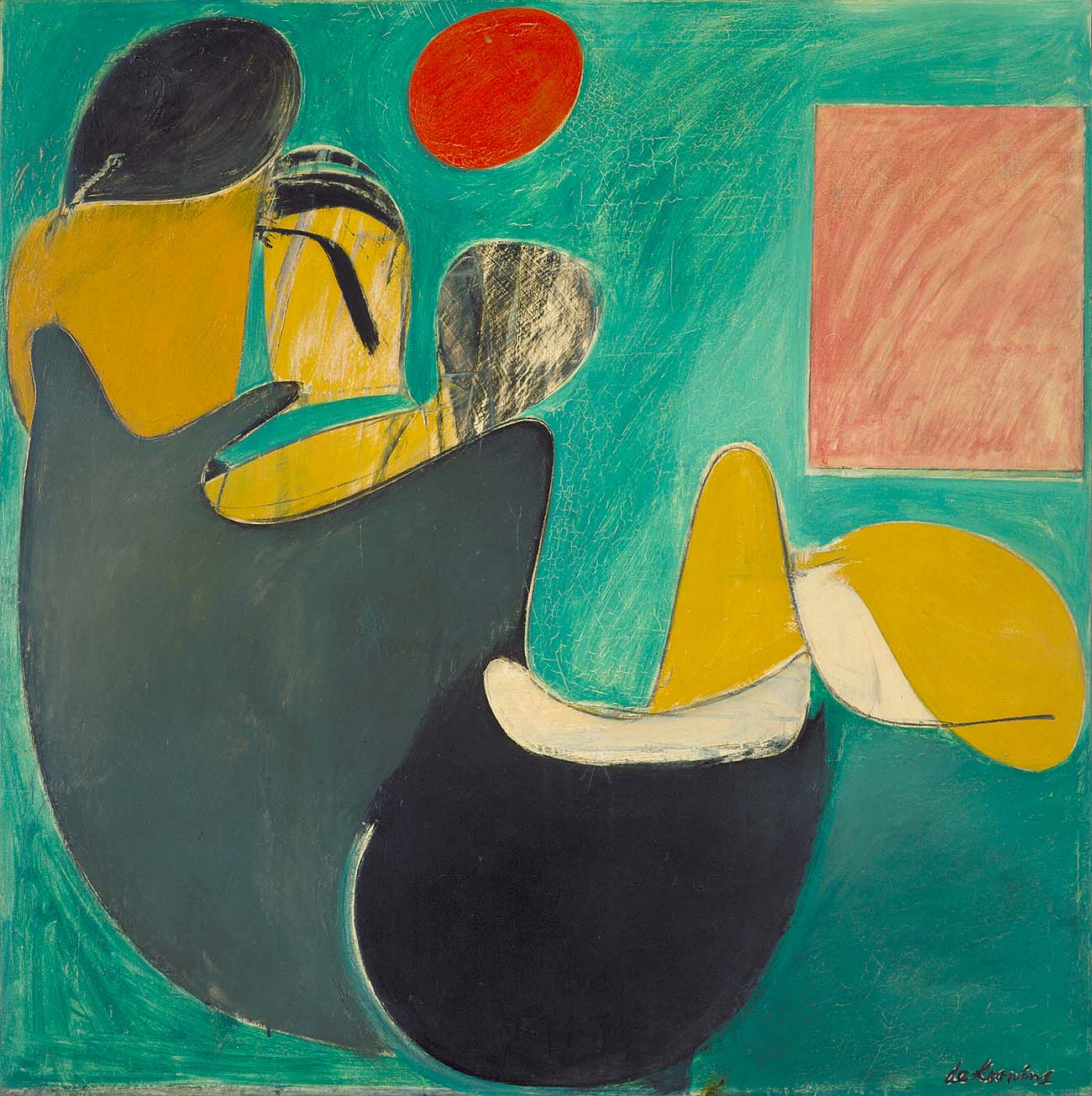The Wave

In The Wave, Willem de Kooning divided large areas of color with contoured lines to create shapes that suggest distorted figures. The dramatic composition of cool greens and blues in the background offset by brighter reds, pinks, and yellows in the foreground attract your eyes to every corner of the canvas. The Wave was first exhibited in New York in 1945 at Peggy Guggenheim's Art of This Century Gallery, a major showcase for the surrealists in exile; the exhibit significantly advanced de Kooning's career in the mid-1940s. By 1950, he emerged as a key figure in the abstract expressionist movement, and his monumental series titled Woman brought him considerable notice.
This painting is currently on view on the third floor of the Museum in the Modern Art galleries
De Kooning left the Netherlands for the United States in 1926, bearing no passport or visa and working his way across the Atlantic as a seaman. He came here because he had seen American movies, read Zane Grey's westerns, and hoped to become as famous as the top New York illustrators he idolized.
An elegant looping line like the automatic drawing of the surrealists suggests a figure reclining before a window or a door. An intense red orb floats in the green murk. Painting quickly, De Kooning applied layers of wet paint atop one another, and not long after this work was finished, cracks emerged near the center of the image. Like a good surrealist, de Kooning accepted the damage as an accidental element of the painting, and declined to repair it.
The Wave was among the canvases that brought the artist to the attention of Peggy Guggenheim at the Art of This Century gallery in 1945. Within a few years, de Kooning was a leading American painter, and only then could he travel to the Netherlands without fear of being barred from the United States on his return.
Exhibition Label, Smithsonian American Art Museum, 2006
- 10
- Other objects by this creator in this institution
- 25
- Objects by this creator in other institutions